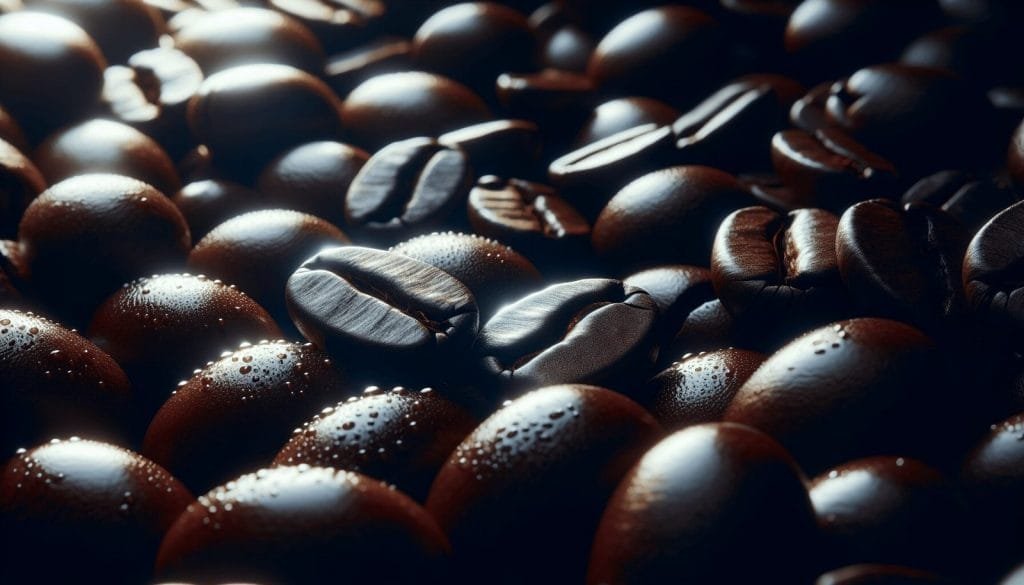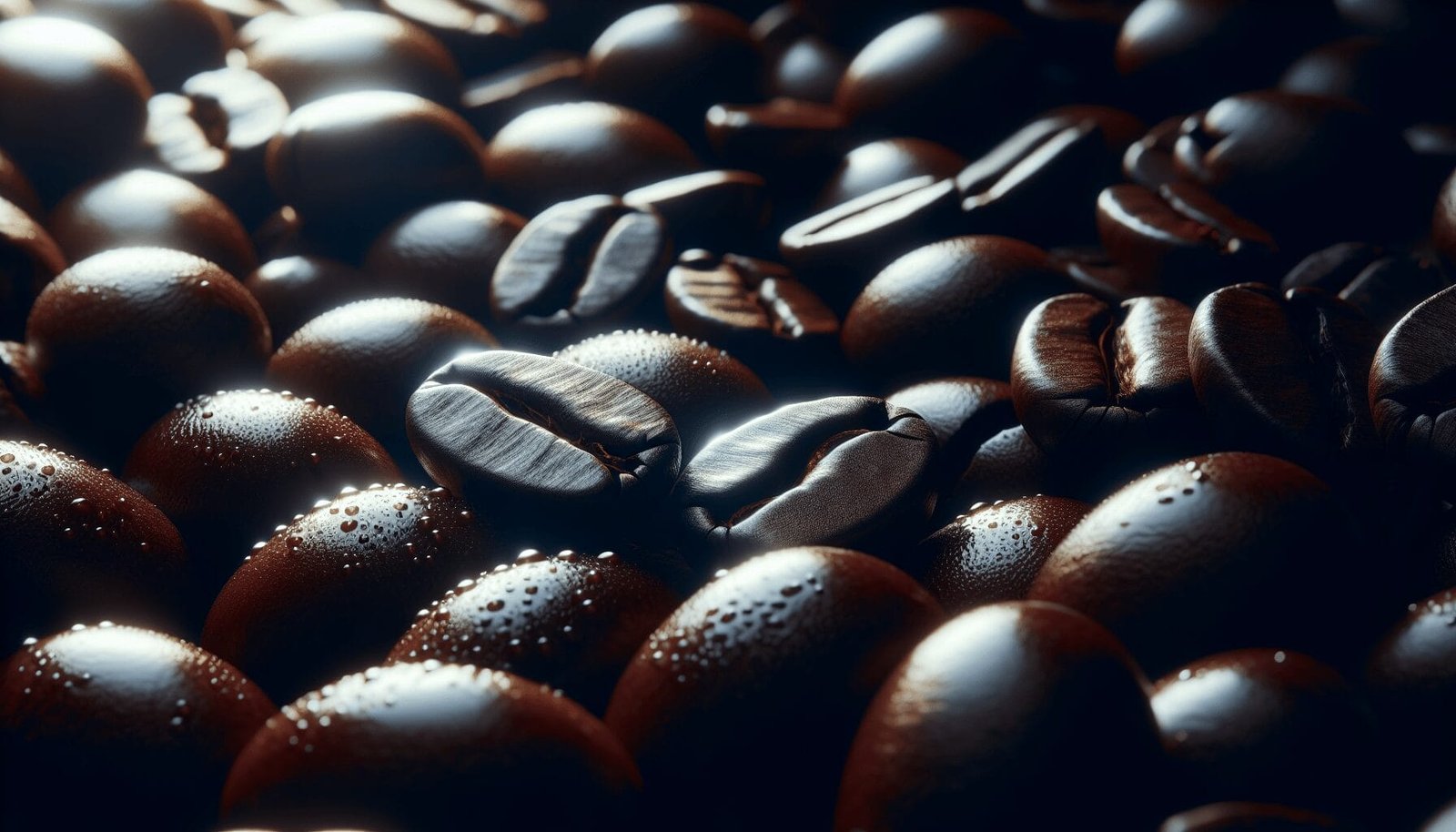Imagine waking up to the rich aroma of freshly brewed coffee each morning, its tantalizing scent wafting through the air and instantly enticing your senses. But have you ever wondered what kind of beans are responsible for this heavenly elixir? Coffee, the beloved beverage of billions, is made from a specific type of bean – the answer to this question lies within the vibrant and diverse world of coffee beans. Join us on a journey of discovery as we unveil the secrets behind the beans that bring joy to our mornings and fuel our days.
Arabica Beans
Description
Arabica beans are the most widely consumed and highly regarded coffee beans in the world. Native to the mountains of Yemen, Arabica beans are known for their delicate and nuanced flavors. They have a distinct elongated shape with a curve and a deep groove. The beans are typically grown at higher altitudes, which contributes to their exceptional quality.
Flavor Profile
Arabica beans offer a wide range of flavors, from fruity and floral to caramel-like and nutty. They are often characterized by a smooth, well-balanced taste with low acidity. The flavor profile can vary depending on the growing region and the specific processing method used. Arabica coffee is renowned for its complexity and subtlety, making it a favorite among coffee connoisseurs.
Growing Regions
Arabica beans thrive in diverse regions around the world. Some of the most well-known growing regions include Ethiopia, Colombia, Brazil, Costa Rica, and Guatemala. Each region imparts its own unique characteristics to the coffee, influenced by factors such as the climate, altitude, and soil composition.
Processing Methods
Arabica beans undergo various processing methods to extract the flavors from the cherries. The most common methods include the washed process, natural/dry process, and honey/semi-washed process. Each method has a distinct impact on the flavor profile, acidity, and body of the coffee. The method selected often depends on the desired end result and the traditions of the coffee-producing region.
Robusta Beans
Description
Robusta beans, as the name suggests, are known for their robust and full-bodied flavors. They have a higher caffeine content compared to Arabica beans and are generally more resilient in their cultivation. Robusta trees are taller and more plentiful than Arabica trees and can withstand harsher growing conditions.
Flavor Profile
Robusta beans are known for their earthy, woody, and sometimes bitter flavor notes. They possess a stronger, more intense flavor profile with higher levels of acidity and a more pronounced aftertaste. The bold flavor of Robusta beans is often desired in espresso blends as it adds depth and a rich crema.
Growing Regions
Robusta beans are primarily grown in regions with a tropical climate, such as Vietnam, Brazil, and Indonesia. These beans thrive at lower altitudes and are less susceptible to diseases and pests. The robustness of the Robusta tree allows it to endure challenging growing conditions, making it an ideal choice for coffee farmers in certain regions.
Caffeine Content
One of the distinguishing factors of Robusta beans is their higher caffeine content. Robusta beans typically contain around 2.7% caffeine, almost double the caffeine content found in Arabica beans. This higher caffeine content contributes to the bolder and more energizing nature of Robusta coffee.
Usage in Blends
Robusta beans are frequently used in coffee blends to enhance the body and crema. When combined with Arabica beans, Robusta adds complexity and a stronger kick to the blend. Blends that incorporate Robusta beans are often chosen for their intense flavors and the ability to create a consistent taste profile.

Liberica Beans
Description
Liberica beans are a rare and distinctive coffee varietal that is less commonly found in the market. They have an elliptical shape and are larger than both Arabica and Robusta beans. The trees that produce Liberica beans are also larger in size, reaching heights of up to 30 feet.
Flavor Profile
Liberica coffee is known for its unique and captivating flavor profile. It often exhibits bold and floral characteristics with hints of smokiness and a woody aroma. The taste can be described as slightly fruity with a full body and a low acidity. The unmistakable flavor of Liberica beans sets it apart from other coffee varieties.
Growing Regions
Liberica beans are primarily grown in regions with a hot and humid climate, such as the Philippines and Malaysia. Due to their rarity, Liberica coffee is often considered a specialty and sought after by coffee enthusiasts who crave a unique and exotic experience. The limited availability of Liberica beans adds to their allure.
Availability
Liberica beans are not as widely available as Arabica or Robusta beans due to the limited cultivation and production. However, small-scale farmers in regions like the Philippines have started to focus on preserving and promoting the cultivation of Liberica beans. As consumer interest in unique coffee experiences grows, the availability of Liberica coffee may expand in the future.
Excelsa Beans
Description
Excelsa beans, also known as Coffea excelsa, are a distinct coffee species often classified within the Liberica family. Though it was previously regarded as a separate species, genetic studies have shown that Excelsa is a natural hybrid of Liberica. Excelsa beans share some similarities with Liberica, but they are smaller in size.
Flavor Profile
Excelsa coffee has a unique flavor profile that offers a blend of fruity and tart notes with a hint of dark chocolate and spice. It has a medium body and moderate acidity, making it an interesting choice for adventurous coffee drinkers. Excelsa beans are uncommon and cherished by those seeking a coffee experience that deviates from the norm.
Growing Regions
Excelsa beans are predominantly grown in regions with a warm and humid climate, such as Vietnam, the Philippines, and East Africa. These regions provide the ideal conditions for the cultivation of Excelsa trees. The distinct flavor profile and scarcity of Excelsa beans contribute to their appeal among specialty coffee aficionados.
Usage in Blends
Excelsa beans are often used in coffee blends to add complexity and enhance the overall flavor profile. Blending Excelsa with other coffee varieties, such as Arabica or Robusta, can produce a unique blend with a captivating taste. The addition of Excelsa beans can introduce unexpected flavor notes and elevate the overall coffee experience.

Varieties and Cultivars
Typica
Typica is one of the oldest and most influential coffee varieties. It originated in Yemen and has been widely distributed throughout the world. Typica beans are known for their delicate flavors, often characterized by fruitiness and a floral aroma. This variety is highly regarded for its contribution to the coffee industry.
Bourbon
Bourbon is a coffee varietal that originated on the island of Bourbon, now known as Réunion. It spread from there to other coffee-growing regions, including Central and South America. Bourbon beans are often associated with a sweet and complex flavor profile with notable acidity. The cultivation of Bourbon has had a significant impact on the diversity of coffee flavors.
Caturra
Caturra is a natural mutation of the Bourbon coffee variety that originated in Brazil. It is known for its compact size, which allows for higher planting densities and increased yield. Caturra beans typically produce a coffee with a bright and clean flavor profile accompanied by citrus and floral notes. This variety is favored for its productivity and distinct taste.
Catimor
Catimor is a hybrid coffee variety derived from a cross between the Timor coffee variety and the Caturra coffee variety. It was developed to enhance disease resistance and increase productivity. Catimor beans often exhibit a balanced flavor profile with mild acidity and a smooth body. The cultivation of Catimor has been instrumental in combating coffee diseases in certain regions.
Geisha
Geisha, also known as Gesha, is a prized coffee varietal that originated in Ethiopia and gained popularity in Panama. Geisha beans are renowned for their exceptional cupping scores and unique flavor characteristics. The coffee produced from Geisha beans is often described as having an elegant and complex flavor profile, featuring floral notes, tea-like qualities, and a bright acidity. The Geisha variety has set new standards for specialty coffee and commands high prices at auctions.
The Impact of Growing Conditions on Flavor
Altitude
Altitude plays a crucial role in determining the flavor profile of coffee. Generally, higher altitudes result in slower bean maturation and denser beans. This slower growth allows for the development of more complex flavors, often described as brighter and more flavorful. Coffees grown at higher altitudes tend to exhibit increased acidity, floral and fruity notes, and a refined sweetness.
Climate
The climate of a coffee-growing region greatly influences the flavor profile of the beans. A combination of temperature, rainfall patterns, and seasons contributes to the overall taste of the coffee. Cooler and more moderate climates often produce coffees with vibrant acidity and intricate flavors, while warmer climates can yield bolder and more robust flavors.
Soil Type
The composition of the soil in which coffee plants grow also affects the taste of the beans. Different soil types provide varying nutrients and mineral content to the plants, influencing flavors and overall quality. Volcanic soils, for example, are highly fertile and known for producing complex and rich coffees. Additionally, the pH levels of the soil can impact the extraction of flavors during brewing.
Shade vs. Sun-grown
The growing conditions under which coffee plants are cultivated can impact the flavor development. In shade-grown coffee, the trees are cultivated under a canopy of shade trees, providing filtered sunlight. This extended maturation process often results in a more nuanced and complex flavor profile. On the other hand, coffee grown in full sun conditions tends to mature more quickly and may produce beans with a bolder and heavier taste.
Processing Methods
Washed Process
The washed process, also known as the wet process, involves removing the outer skin of the coffee cherry with water and fermenting the beans for a specific period. This results in a clean and bright cup with pronounced acidity and a medium body. The washed process is commonly used for Arabica beans, allowing their delicate flavors to shine.
Natural/Dry Process
In the natural or dry process, the coffee cherries are laid out to dry in the sun, allowing the beans to ferment within their fruit. This method imparts fruity and intense flavors, often accompanied by a heavier body and lower acidity. Natural process coffees are frequently associated with notes of dried fruits, spices, and chocolate.
Honey/Semi-Washed Process
The honey or semi-washed process involves removing the skin of the coffee cherries, but allowing some of the sticky, honey-like mucilage to remain on the beans during drying. This method creates a unique flavor profile, combining characteristics of both washed and natural processed coffees. Honey-processed coffees often have a syrupy body and an enhanced sweetness.
Other Experimental Methods
Coffee producers and enthusiasts are continuously exploring and experimenting with various processing methods. These experimental methods can include anaerobic fermentation, carbonic maceration, and yeast fermentation, among others. These techniques push the boundaries of traditional processing, resulting in innovative and distinct flavor profiles that cater to the adventurous palate.
The Role of Roasting
Light Roast
Lightly roasted beans are typically roasted for a shorter duration, preserving the delicate flavors and acidity of the coffee. Light roasts often showcase the unique characteristics of the beans’ origin, allowing the subtle nuances to be experienced. The result is a cup of coffee with a vibrant and refreshing taste, highlighting the natural sweetness and complexity of the beans.
Medium Roast
Medium roast strikes a balance between preserving the origin flavors and achieving a slightly fuller body. Medium roasts offer a broader flavor profile, combining the brightness and acidity of a light roast with the caramelization and richness that come with longer roasting. This roast level is widely enjoyed due to its versatility and approachability.
Dark Roast
Dark roasts are characterized by the development of bold and intense flavors brought about by longer roasting times. The extended roasting process leads to the caramelization of sugars, resulting in deep and robust flavors. Dark roasts often offer a heavy body, low acidity, and smoky undertones. These coffees are appreciated by those who favor a strong and bold taste.
Roast Profile Selection
The selection of the appropriate roast profile is critical in bringing out the desired flavors in coffee. Roast profiles can be tailored to complement the inherent characteristics of different coffee beans. A lighter roast may highlight delicate floral and fruity notes, while a darker roast may emphasize the richness and bittersweet qualities. Skillful roasters carefully consider the origin, variety, and flavor profile of the beans when determining the ideal roast profile.
Blending Beans
Reasons for Blending
Blending beans is a common practice in the coffee industry and offers various advantages. Blends allow roasters to create a consistent flavor profile year-round by combining beans from different regions or varietals. Blending also provides the opportunity to balance the flavor characteristics of different beans, creating a harmonious and well-rounded cup. It allows for flexibility in meeting customer preferences and achieving a desired taste profile.
Balancing Flavor and Complexity
Blending beans can balance the flavor profile and complexity of a coffee. By combining beans with varying acidity, body, and flavor notes, roasters can create a more interesting and multidimensional cup. Blends can bring together the best qualities of different beans, resulting in greater complexity and depth of flavor.
Popular Coffee Blends
There are numerous popular coffee blends enjoyed worldwide. Some well-known blends include the Mocha-Java blend, which combines Mocha beans from Yemen with Java beans from Indonesia, resulting in a rich and well-balanced cup. Another popular blend is the Breakfast Blend, often a mix of medium and dark roasted beans, offering a smooth and flavorful start to the day. Blends like these have stood the test of time, captivating coffee lovers with their unique combinations of flavors and characteristics.
Single-Origin vs. Blend
Advantages of Single-Origin
Single-origin coffees allow coffee enthusiasts to experience the unique flavors and characteristics of beans from specific regions. They offer the opportunity to explore the nuances imparted by factors such as the growing conditions, soil, and processing methods of a particular origin. Single-origin coffees are often celebrated for their purity and the ability to connect consumers to the coffee farmers and their stories.
Strengths of Blends
Blends provide the opportunity to create harmonious and consistent flavor profiles that appeal to a broader range of tastes. By combining beans with various characteristics, roasters can achieve a balance of acidity, sweetness, and body. Blends allow for greater control over the final cup, ensuring the desired flavor and quality with each batch. Additionally, blends can enhance the complexity and depth of flavor, providing a more rounded and satisfying drinking experience.
Personal Preference
Choosing between single-origin and blended coffees ultimately comes down to personal preference. Some coffee lovers appreciate the distinct flavors and stories associated with single-origin beans, while others prefer the consistency and balance offered by blends. Exploring both options can expand one’s understanding and enjoyment of coffee, allowing for a deeper appreciation of the complexities and diversity within the world of coffee.




